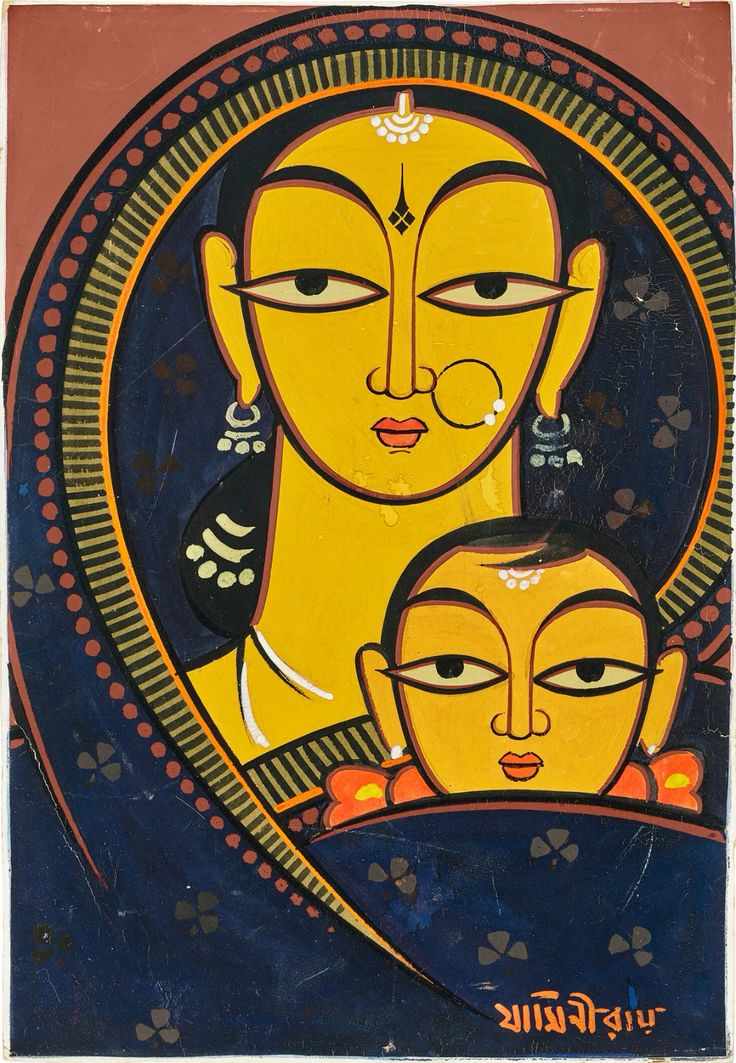
Nestled within the rugged landscapes of central India - Madhya Pradesh, Gujarat, Rajasthan, and Maharashtra carries a vibrant tapestry of culture and tradition, woven intricately through the brushstrokes (can be believed as dots of brush) of Bhil Art. This ancient form of tribal expression, borne from the indigenous Bhil community, transcends mere aesthetics to embody a profound connection with nature, spirituality, and folklore. In this exploration, we delve deep into the rich history, significance, and captivating narratives behind Bhil Art, unearthing the essence of this tribal art.
Unravelling the History
With a history dating back thousands of years, Bhil Art finds its genesis in the sacred rituals, customs, and daily lives of the indigenous people inhabiting the heartlands of Madhya Pradesh, Gujarat, Rajasthan, and Maharashtra.
Initially, Bhil Art manifested as transient expressions on the walls of mud houses or as intricate adornments during ceremonies and festivals. These primal forms of artistic expression served not only as aesthetic embellishments but also as conduits for spiritual invocation and communal storytelling. Over time, Bhil Art evolved from its ephemeral canvases to more enduring mediums, including paper, cloth, and canvas, thereby ensuring the preservation of its cultural heritage for posterity.
Significance and Symbolism
At its core, Bhil Art serves as a mirror reflecting the symbiotic relationship between humanity and the natural world. Every stroke of the brush, every hue meticulously applied, resonates with profound symbolism and spiritual resonance. Through a kaleidoscope of motifs and imagery, Bhil Art celebrates the intrinsic beauty of nature, venerating animals, birds, trees, and celestial bodies as divine manifestations deserving of reverence and respect.
Moreover, Bhil Art transcends the realm of mere aesthetics to embody a profound spiritual connection with the cosmos. The motifs and symbols embedded within each artwork convey narratives steeped in mythological lore, folk traditions, and cosmic philosophies. Through these visual narratives, the Bhil community seeks to impart timeless wisdom, preserve ancestral knowledge, and foster a deeper understanding of the interconnect of all existence.
Cosmic Symbolism: Bhil art often incorporates symbolic imagery representing celestial bodies, cosmic forces, and the cyclical rhythms of the universe. The sun, moon, stars, and planets are frequently depicted in Bhil paintings, symbolizing cosmic energies, divine presence, and the eternal dance of creation and destruction.
Mythological Narratives: Many Bhil artworks feature mythological narratives drawn from Hindu mythology, tribal folklore, and oral traditions. These stories often revolve around cosmic themes such as creation myths, divine interventions, and cosmic battles between gods and demons. Through their art, Bhil artists explore the metaphysical dimensions of existence and convey timeless truths about the nature of reality.
Ritual and Ceremony: This art is intertwined with the rituals, ceremonies, and spiritual practices of the community. Paintings are often created as part of religious rituals, festivals, and auspicious occasions, serving as sacred offerings to the gods and ancestors. Through these artistic expressions, the Bhil people seek to establish a harmonious relationship with the cosmic forces that govern their lives. also the concept of harmony with nature, reflecting the indigenous community's close relationship with the natural world. Paintings often depict scenes of flora and fauna, landscapes, and seasonal cycles, celebrating the interconnectedness of all living beings within the cosmic web of existence. Through their art, the Bhil people express gratitude for the bounties of nature and their role as stewards of the earth.
Spiritual Journey: Serves as a visual medium for spiritual exploration and personal transformation. Through intricate patterns, vibrant colors, and symbolic motifs, Bhil artists invite viewers on a journey of self-discovery and cosmic realization. Each artwork becomes a portal to the divine, offering glimpses of transcendental truths and spiritual insights that transcend the boundaries of time and space.
Famous Bhil Art Stories
1. Pithora Paintings:
Among the most renowned forms of Bhil Art are the Pithora paintings, which derive their name from Pithora Baba, a revered deity worshipped by the Bhil community. These intricate artworks depict scenes from the life of Pithora Baba, portraying his divine exploits, benevolent deeds, and cosmic significance. Characterized by vibrant colors, geometric patterns, and stylized figures, Pithora paintings serve as visual hymns, invoking blessings, protection, and prosperity upon the community.
2. The Epic of Pabuji:
Another prominent narrative depicted in Bhil Art is the epic tale of Pabuji, a legendary hero and folk deity revered by the Rabari and Bhil tribes. The story, known as the "Pabuji Ki Phad," chronicles the heroic exploits and divine interventions of Pabuji, who embarks on a quest to uphold justice, protect the innocent, and vanquish evil forces. Through their vivid paintings, Bhil artists immortalize the heroic feats of Pabuji, capturing the essence of courage, sacrifice, and devotion that define his saga.
3. Creation Myths and Cosmic Tales:
Bhil Art also delves into the realms of creation myths, cosmic cycles, and supernatural realms, offering glimpses into the mystical tapestry of existence. Through intricate patterns, surreal imagery, and symbolic motifs, artists depict the primordial dance of gods and goddesses, the genesis of the universe, and the eternal struggle between light and darkness. These cosmic narratives serve as metaphysical maps, guiding the viewer on a transcendent journey through the boundless expanse of the cosmos.
In the enchanting realm of Bhil Art, every brushstroke narrates a story, every motif unveils a myth, and every hue embodies a spiritual resonance. Through their vibrant canvases, the Bhil community preserves not only their cultural heritage but also their spiritual legacy, offering profound insights into the interconnectedness of humanity, nature, and the divine. As we immerse ourselves in the timeless tradition of Bhil Art. Overall, Bhil art is not only a form of creative expression but also a reflection of the identity, heritage, and cultural resilience of the Bhil people. It holds significance not only within the community but also as a valuable part of India's diverse artistic heritage.









Write a comment ...